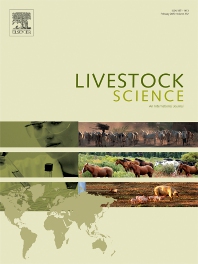Document type : Scientific article published in Livestock Science
Authors: Thore Wilder, Joachim Krieter Nicole Kemper, Kathrin Büttner
Preview: Tail-biting in pigs compromises animal health and animal welfare, thus, early indicators of an outbreak must be discovered before severe tail lesions occur. Tail posture is one of these promising indicators. The individual animal's behaviour is affected by the group structure, which can be investigated using social networks. Therefore, this study analysed the effect of the group structure of tail-biting pigs on tail posture using pig-level social network parameters. Detailed behavioural observations of 6 pens with 24 undocked pigs per pen four days before a tail-biting outbreak were the data basis. The effect of ingoing network parameters (weighted in-degree, weighted ingoing closeness) on binary tail posture (0: raised, 1: lowered) was tested as covariates in generalised linear mixed models. The pen (1-6), day (t-1 to t-4), hour (10:00 h - 17:00 h), location (at the trough, not at the trough) and receiver (received tail-directed behaviour in the previous 20 min, received no tail-directed behaviour in the previous 20 min) were used as fixed effects. Additional to the fixed effect receiver (p < 0.05), the probability of a lowered tail posture increased with higher values of weighted in-degree (p < 0.05) if less than 40 min passed between the tail-biting and the tail posture observation. If the tail-biting event was 40 to 120 min before the tail posture observation, the probability of a lowered tail posture increased with higher values of weighted ingoing closeness (p < 0.05). Furthermore, the location in the pen (p < 0.05) and the interaction between pen and day (p < 0.05) affected the tail posture significantly. Thus, the group structure of tail-biting pigs has a prolonged influence on tail posture. For this reason, the tail posture is a practicable indicator of tail-biting if monitored regularly.




